By Brian Stover
As triathletes, we tend to measure many things: how fast we went, how many calories we ate, how much we weigh. In a sport where you can measure just about anything and everything, there’s a good chance you are missing a critical piece to the puzzle if you aren’t measuring your power output on the bike.
You can measure how far you’ve ridden, you can measure how fast you’ve ridden, you can measure the total amount of time you’ve ridden, but none of those measurements actually tell you what you really did, how much work you did. You subjectively know what you did, or how fast you did it, but you aren’t sure if it helped your fitness or really helped your fitness. The only sure way to know if what you did was effective, and how much so, is to use a power meter.

Who is Training With Power?
The top Pro Tour cycling teams all use power meters, most of the top triathletes use power meters and, with the wide availability of power meters on the market, many of your competition are using power meters. Training with power allows you to train objectively by measuring your output in watts. It allows you to measure your favorite route and know if the ride you just finished was a good ride or a bad ride. A power meter measures what you are doing when you ride. You know if the amount of effort you are putting out is sustainable for the long haul. There is no guessing; the power meter does not lie.
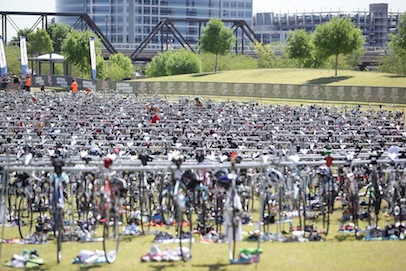
How Can a Power Meter Help Me?
How many times have you been to a race and heard forlorn competitors lament post-race, “if only I had gone faster”? In every race, people underperform. These are mostly self-inflicted wounds. A frequent cause of underperformance is riding harder than you should, which negatively impacts your run. One way to prevent this is to use a power meter to target a certain wattage output – an output that assures that you aren’t riding your ability to run into the ground. By riding smart, you can finish without fading during the late stages of the run and ensure a strong, fast finish.
A power meter also allows you to quantify your training. Maybe you used to ride your favorite route in 2 hours and now you ride it in 1:50:00. You are riding faster, so it has to be a better workout, right? Maybe, maybe not. With a power meter, you can download your rides into programs like WKO+, RaceDay Apollo or Golden Cheetah to keep a record of your riding history and analyze each ride, providing you solid and objective feedback. After you have established your functional threshold power, or FTP (around the maximal amount of power you can hold for an hour), you are able to measure each ride against this level, knowing for certain if the route you rode today in 1:50:00 is more or less beneficial to your overall training goals than when you rode it in 2 hours three months ago. With this knowledge, you can now tailor your training so you get the biggest bang for your training buck and ultimately end up with faster race times.
How do I measure my FTP? FTP can be determined by performing simple field-testing. Detailed testing protocol can be found on pages 42-48 in the book Training and Racing with a Power Meter, by Hunter Allen and Andrew Coggan, phD.
Case Study
When you use a power meter you can ride smart and avoid succumbing to the “if only I had…” regrets post-race. Below are two power charts from the Ironman World Championships in 2012. I’ve marked each person’s FTP, shown by the top dotted line in each chart. The second dotted line is their average power for the entire bike leg. The first person rode well above their FTP for long periods of time during the early part of the bike. On the trip home, you can see a trend of declining power. His early exuberance caught up with him, causing him to ride below his target time and run much slower than his average run times. The second rider had the discipline to allow people to ride past him early in the race. As he tackled the climbs to the turnaround, he increased his watts, whereas others began to fade, and he closed the gap. Riding back from the turnaround, he was able to raise his power again, distancing himself from the majority of his competitors who had simply gone too hard, too soon. He went on to wrap up the race with not only his fastest marathon ever, but also with an Ironman personal best time.

Which Power Meter is Best For Me?
Now that you are convinced that using a power meter is the only true way to quantify your bike training and can be used to enhance your performance, the question is: Which power meter do I purchase? There are three basic types of power meters, each with their advantages and disadvantages. No matter what system you decide is right for you, you will need a head unit to display your power while riding.
Hub-Based Power Meter: CycleOps PowerTap is a hub-based system, housing the power measuring mechanisms in the hub of your rear wheel. These systems come built into a selection of training and racing wheels, or you can purchase just the hub itself to be built into your compatible wheels. This is the easiest system to swap between multiple bikes, though unless you want to race on your training wheel or train on your racing wheel, you’ll need to purchase separate wheels (but really, can you ever have too many wheels?).
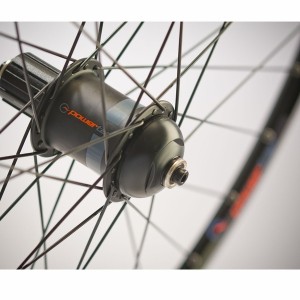
Crank-Based: SRAM Quarq Power is a crank-based system, meaning it takes its measurements from points on the spider arms of your crank assembly. The system is easy to install once you are familiar with the process of crank installation. If you have more than one bike, you will need to purchase 2 systems or swap your cranks out each time you switch bikes.
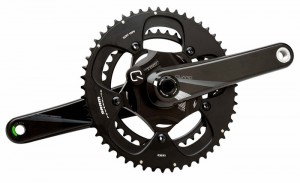
Pedal-Based: The newest players in the power meter game are pedal-based systems like the Garmin Vector Power Meter, taking measurements from the spindles of your pedals. This system is fairly easy to swap between bikes but requires you to use a torque wrench with an adaptor when you install it. If you install them incorrectly or do not torque to spec you will get incorrect readings.
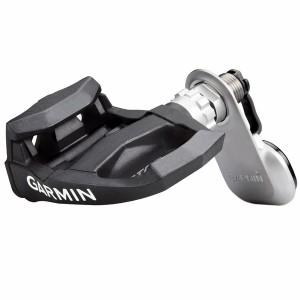
How Do I Use This Thing?
So you’ve smartly chosen to start training and racing with power. Congratulations! Now what? The most common question I get is “how do I get started?” Step one: go ride. Ride with your power meter over a few of your favorite routes, look at the number of watts you are putting out and think about how it feels. Allow yourself to just ride for a few weeks to collect data. Download it, look at it, but don’t change your training–yet. During this data collection period, pick up the book Training and Racing with a Power Meter by Hunter Allen and Andy Coggan, PhD. This is the gold standard for books on utilizing power to drive your training and racing decisions. It can be a little intimidating at first but provides the most in-depth primer on using your power meter to make the training and racing decisions that will help you reach your goals.
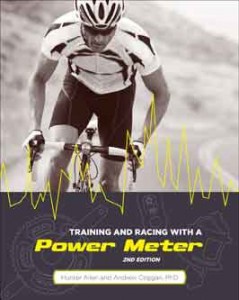
Training with power is not a new phenomenon. I began training, racing and coaching my athletes with the use of a power meter in 2005. The improvements in technology, combined with demand and marketplace competition have brought prices down in recent years, making this invaluable tool readily available. If you are serious about getting the most out of your training and racing to your full potential on race day, picking up a power meter will be the best early season purchase you can make.
About Brian Stover and Accelerate 3 Coaching: Brian is a triathlon coach who started his coaching career by taking a position as an assistant coach at a year round swim program in NC in 1994. That experience hooked him on coaching and now, almost 20 years later, he coaches triathletes, duathletes, cyclists, runners and other endurance athletes around the world. In this time, he has coached everyone from cyclists, mountain bikers, triathletes crossing the finish line for the first time, World Champion age group triathletes and professional triathletes. His athletes have won races or their age groups in local triathlons, 70.3′s and Ironman’s around the world. Learn more at www.accelerate3.com.
